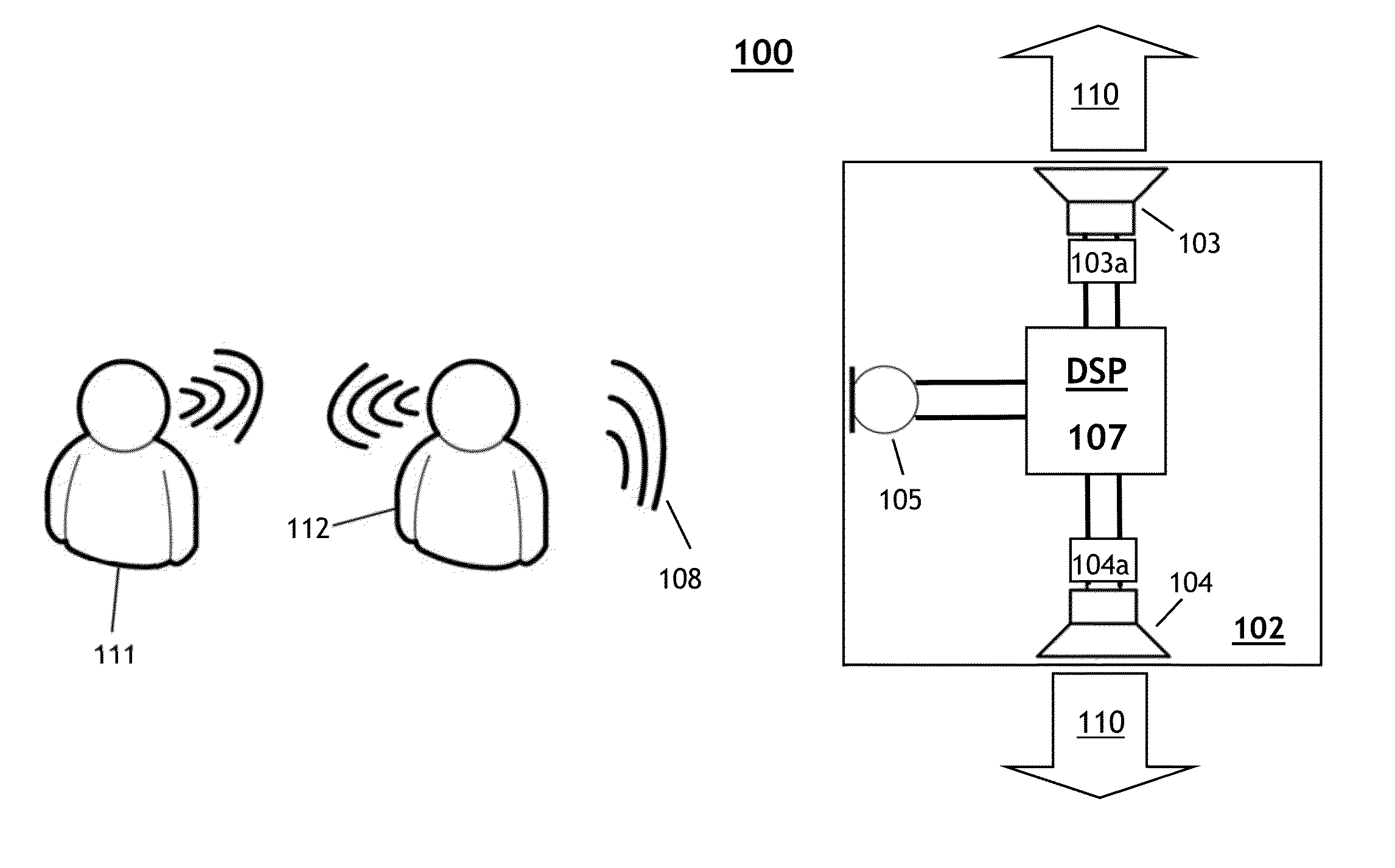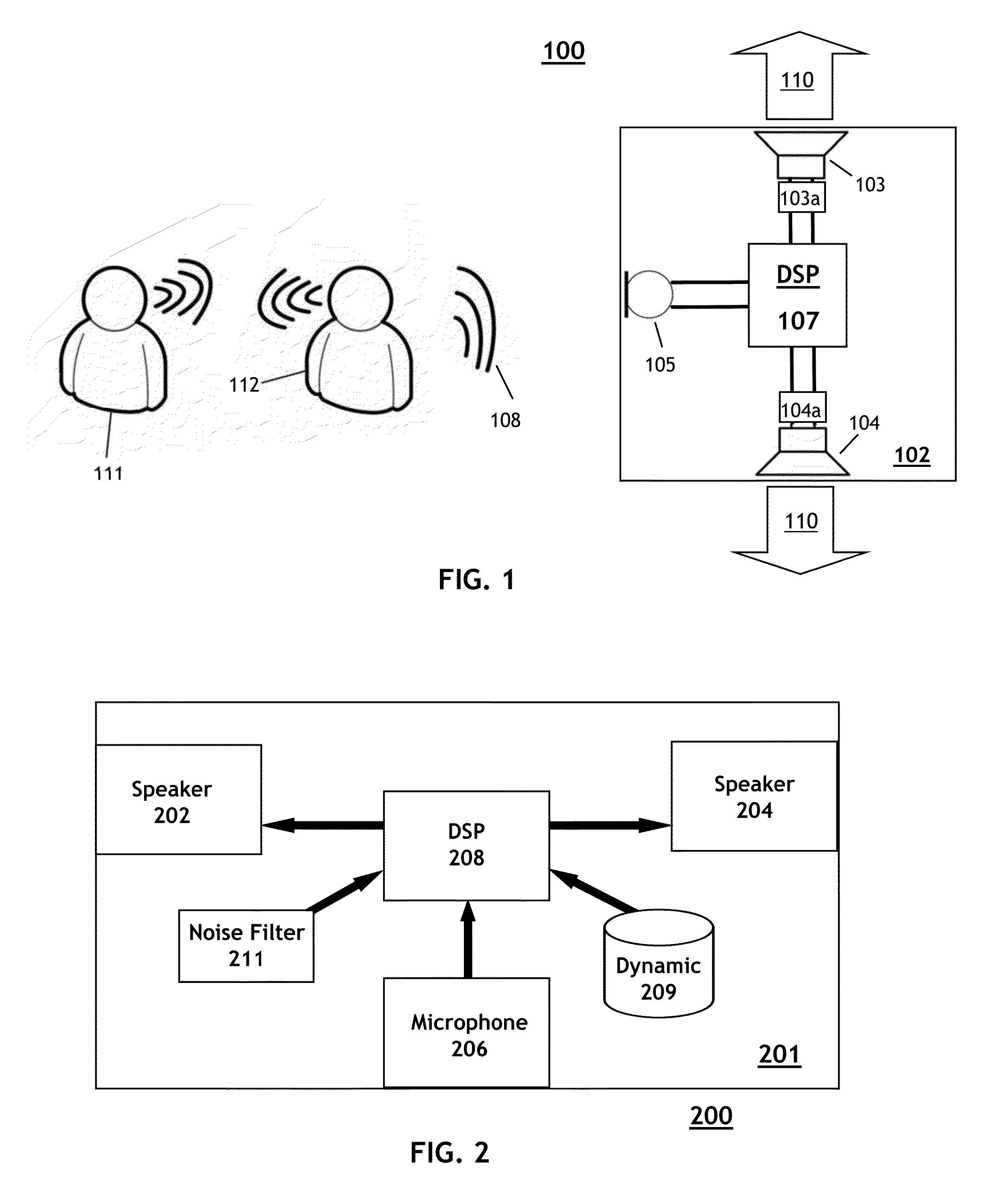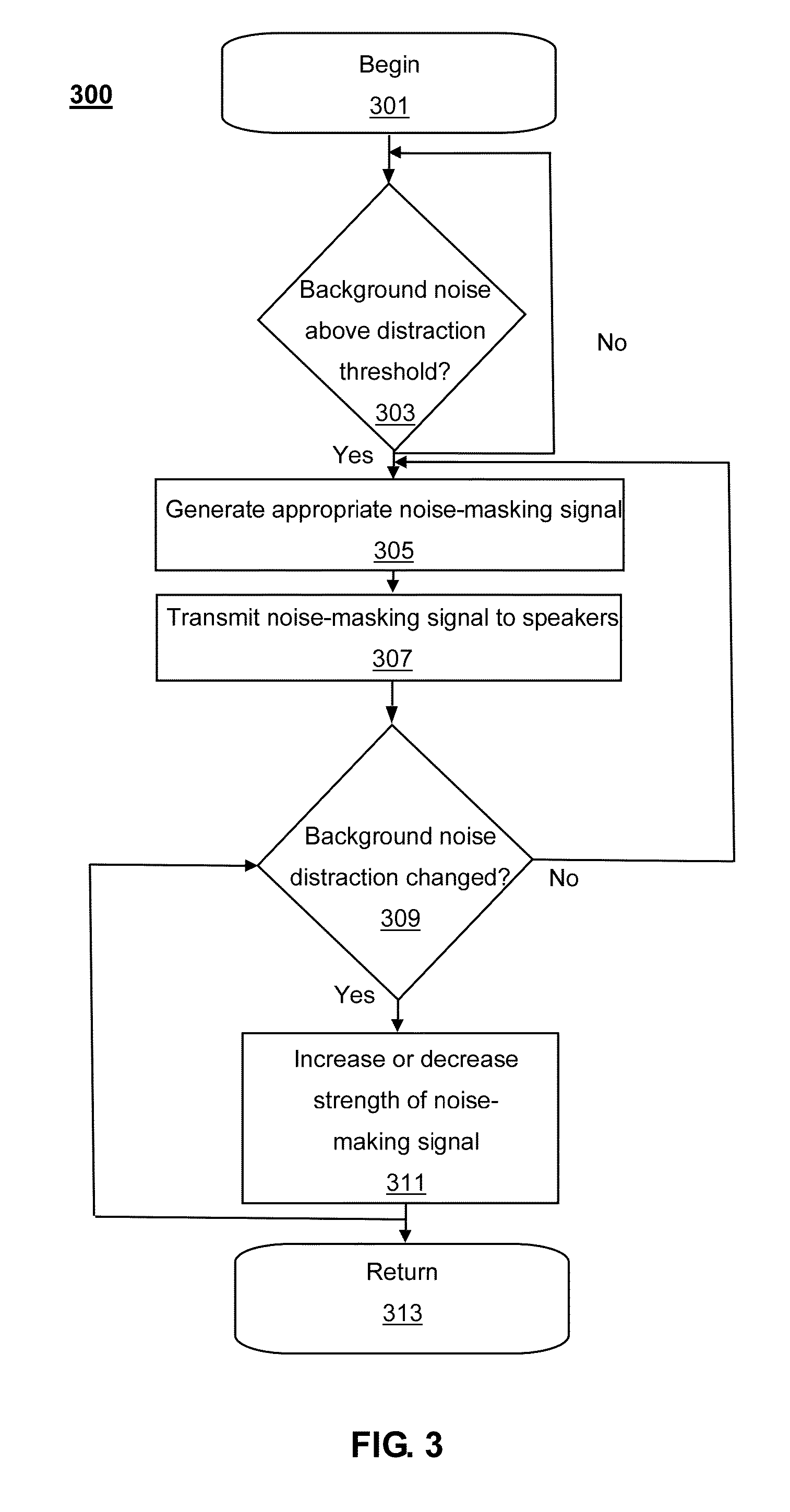Noise Masking in Headsets
a headset and noise masking technology, applied in the field of wearable technologies and noise reduction, can solve the problems of high noise, high noise, and high noise within an open space, and achieve the effects of reducing noise, reducing noise, and reducing nois
- Summary
- Abstract
- Description
- Claims
- Application Information
AI Technical Summary
Benefits of technology
Problems solved by technology
Method used
Image
Examples
Embodiment Construction
[0029]Embodiments of the invention provide noise masking in a headset or headphone. Some embodiments of the invention pertain to dynamic or adaptive noise masking while other embodiments of the invention provide static noise masking. Headsets and headphones are used interchangeably for embodiments of the invention.
[0030]Embodiments of the invention may help solve at least two problems in headphones that can be defined as speech intelligibility and acoustical comfort.
[0031]As previously discussed, office noise, and in particular speech noise, is a top complaint of office workers about their offices. Office acoustic design has improved at reducing ambient noise, but the quiet environments that have been created cause speech noise to contrast strongly with the otherwise quiet environment. Even quiet offices, therefore, can create levels of speech intelligibility that are highly distracting.
[0032]In terms of acoustical comfort, open office noise is typically described by workers as unpl...
PUM
 Login to View More
Login to View More Abstract
Description
Claims
Application Information
 Login to View More
Login to View More - R&D
- Intellectual Property
- Life Sciences
- Materials
- Tech Scout
- Unparalleled Data Quality
- Higher Quality Content
- 60% Fewer Hallucinations
Browse by: Latest US Patents, China's latest patents, Technical Efficacy Thesaurus, Application Domain, Technology Topic, Popular Technical Reports.
© 2025 PatSnap. All rights reserved.Legal|Privacy policy|Modern Slavery Act Transparency Statement|Sitemap|About US| Contact US: help@patsnap.com



